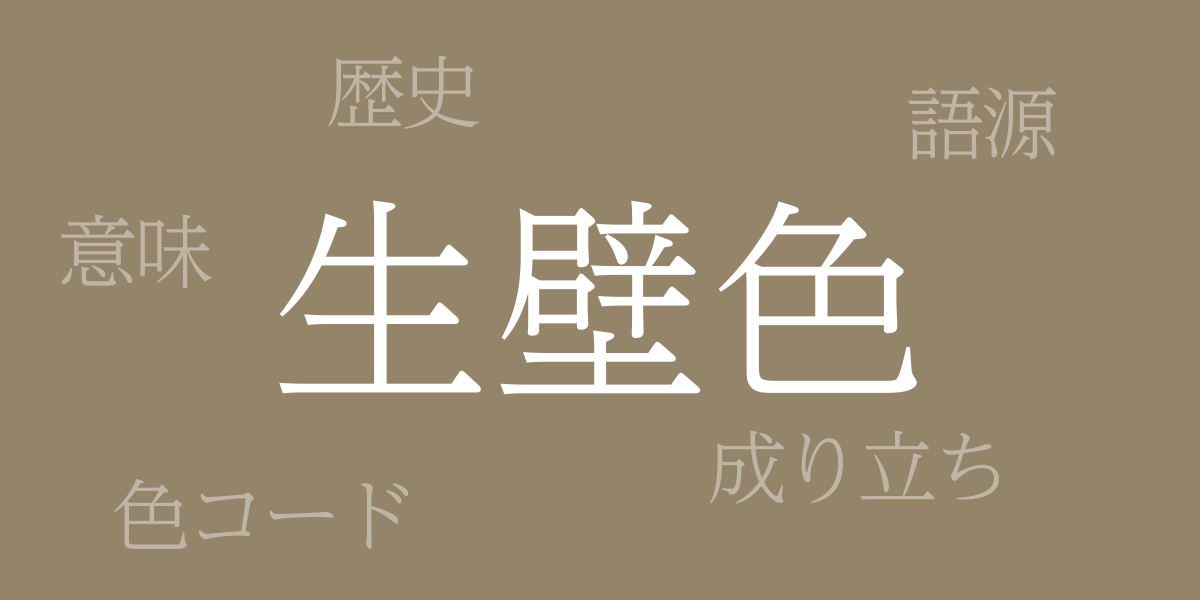The rich natural environment and deep history of Japan have cultivated a palette of traditional colors, among which “Namakabe-iro” (生壁色 – なまかべいろ) stands out for its unique texture. This calm and composed color has been used in Japanese architecture and clothing since ancient times. This article explores the allure of Namakabe-iro, delving into its history, color codes, and its Western name.
About Namakabe-iro (生壁色 – なまかべいろ)
Namakabe-iro (生壁色 – なまかべいろ) is one of Japan’s traditional colors, characterized by its subtle grayish-green hue. The name originates from its resemblance to the color of moss-covered earth walls or freshly plastered walls, reflecting the Japanese sensibility of incorporating natural colors into everyday life. This color, rooted in Japan’s natural landscape, has been used in tatami mats, shoji screens, and clothing.
The History of Namakabe-iro
Namakabe-iro is a traditional color that has been used since the Heian period. It became particularly prominent during the Muromachi period, when it was frequently used in tea rooms, complementing the wabi-sabi aesthetic and becoming symbolic of Japanese beauty. During the Edo period, it became popular among the common people and was used in various crafts such as textiles and pottery.
Color Code of Namakabe-iro
When reproducing Namakabe-iro in digital designs or on the web, the following color codes can be used:
- HEX: #94846A
- RGB: R:148 G:132 B:106
- CMYK: C:49 M:49 Y:60 K:0
Western Name for Namakabe-iro
The Western equivalent of Namakabe-iro includes names like “Moss Green” and “Olive Drab,” reminiscent of the green of moss and olive leaves, and possessing a calm hue that evokes nature, similar to Namakabe-iro. These names are useful in international color communication to convey the nuances of Namakabe-iro.
Conclusion on Namakabe-iro
Namakabe-iro is a color that values harmony with nature, prominent among Japan’s traditional colors. Its gentle hue is cherished in the modern world of design and fashion, evoking the essence of Japanese culture. In the digital age, its color codes allow for easy representation, enabling people around the world to enjoy this beautiful traditional color. Understanding the deep history and appeal of Namakabe-iro allows us to rediscover the richness of Japanese colors.

























